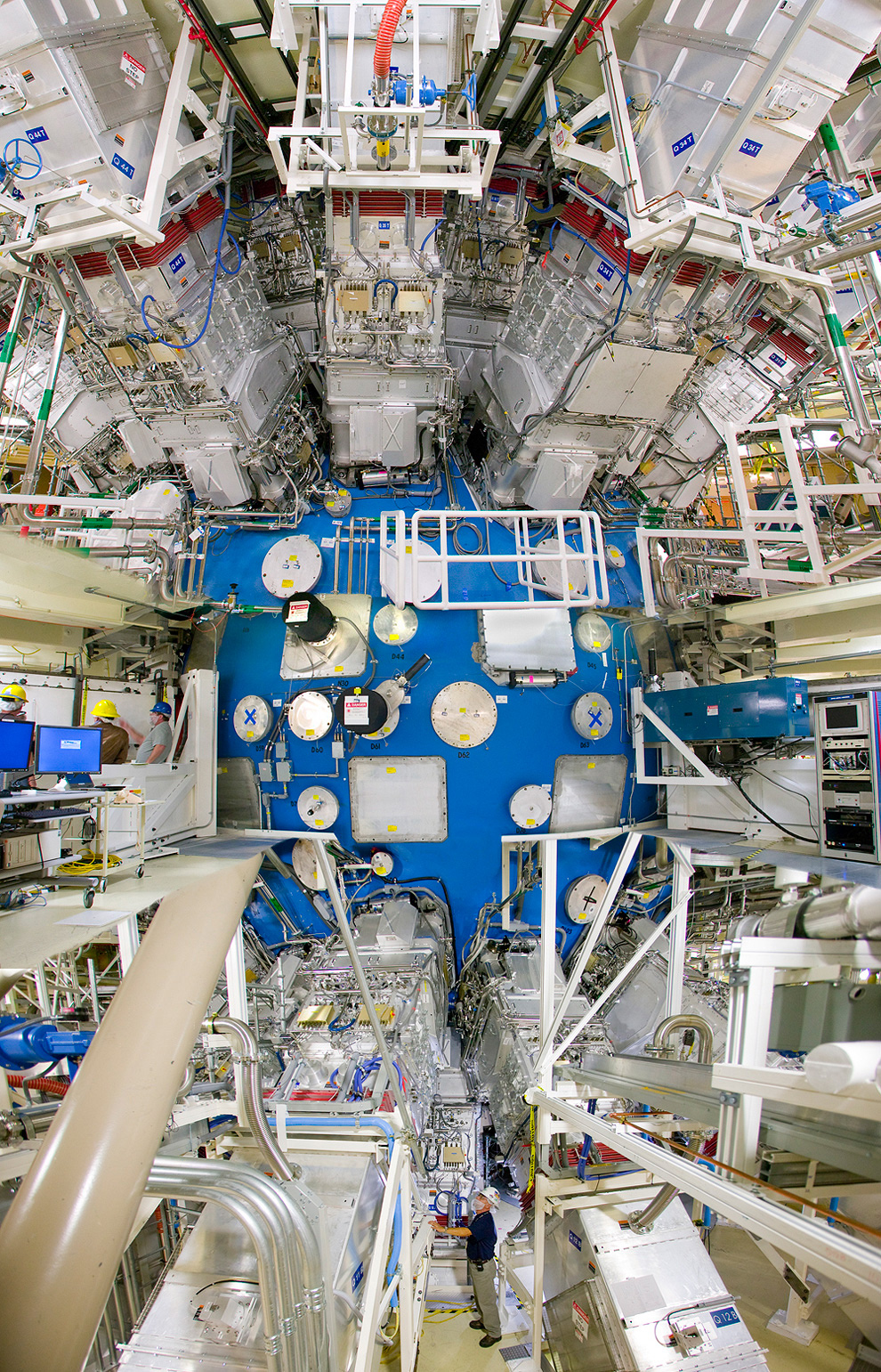Target Chamber

Depositing the Laser Energy
The "Grand Central Station" of the National Ignition Facility is the Target Bay, which houses the final optics assemblies, diagnostics, and the Target Chamber.
Pulses from NIF’s 192 high-powered lasers, in a journey that originates more than 100 meters away in the Master Oscillator Room, race toward the Target Bay with incredible precision. When they arrive at the center of the Target Chamber, they deposit as much as 500 trillion watts of power for up to 20 billionths of a second on an eraser-sized capsule containing a target the size of a BB.

Surrounding the target are many sensitive diagnostics that examine in minute detail the arrival of the laser beams and the reaction of the target to this sudden deposition of energy. Temperatures of 100 million degrees and pressures extreme enough to compress the target to densities many times the density of lead are created.
The Target Bay is a concrete silo 30 meters high and 30 meters in diameter and is filled with laser, diagnostic, and other utility/support equipment needed to conduct experiments safely and reliably.
The Target Chamber with its utility systems provides the vacuum environment needed during the experiment, holds the final optics assemblies that focus the laser light on the target, and contains debris and x rays generated during experiments. The chamber, a sphere 10 meters in diameter, was assembled from 10-centimeter-thick aluminum panels that were pre-formed and then welded in place. It is covered with 0.3 meters of concrete that has been injected with boron to absorb neutrons from fusion reactions. The remaining neutrons are absorbed by the concrete Target Bay and switchyard walls to protect workers and the public.
The Target Chamber is filled with holes that permit the laser beams to enter the chamber and to provide viewing ports for all of the diagnostics. The diagnostic ports are about one-half meter in diameter and are generally concentrated around the "waist," or equator, of the Target Chamber
Target handling systems precisely position the target at Target Chamber center and freeze the target to cryogenic temperatures so that the fusion reactions can be more easily achieved. Seven-meter-long positioners are located just outside the Target Chamber. They can be retracted to permit installation of a target and then extended into position at Target Chamber center. Most targets are maintained at very cold temperatures, about 18 kelvins (-427 degrees Fahrenheit). One of the positioners can maintain this temperature precisely to a tolerance of better than 0.001 degrees centigrade.



